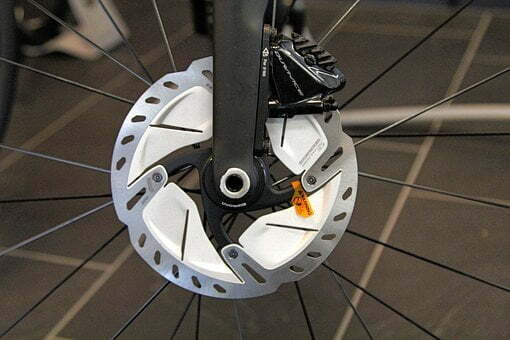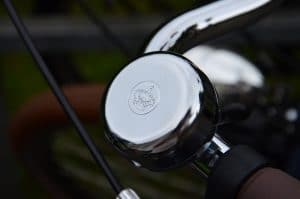disc brake newbie? - 7 important things you need to know
So the big in-thing we’re talking about is disc brakes – the be all and end all of bike braking systems according to one camp and an unnecessary expense cooked up by the cycling industry to squeeze more money from the cycling community according to the other camp.

1. So What Are Disc Brakes?
2. Types of Disc Braking System
- Pulling the brake levers which are attached to cables – like traditional rim brakes – squeezes the calipers which force the brake pads to grip the rotor making the bike wheel stop. This method is known as mechanical.
- Pulling the brake levers builds up a pressure which forces fluid to move through a solidly sealed line into the caliper which presses the pads against the disc making the bike wheel stop. This is known as a hydraulic braking system.
3. Hydraulics versus Mechanical Disk Brakes
Hydraulics are seen as far superior to mechanical brakes by many in the biking world. One reason for this is that rather than pulling on a cable you are pushing the hydraulic fluid towards the calipers. This means less effort is required compared to mechanicals.
In fact the brake lever action is so light that there are brake levers that require the use of only one or two fingers like this one. They also offer better modulation ie precise control on how much the brakes bite the rotor.
The other key advantage is that the brake pads become self-adjusting as they wear down because of the fluid pressure. Hydraulic braking systems are much more expensive and can be found on more high-end eBikes.
4. Disc Sizes
| Road / Cyclocross | Mountain | Enduro / Downhill |
|---|---|---|
| 140mm | 160mm | 200mm |
| 160mm | 170mm | 203mm |
| 180mm |
5. Types of Rotors

The second type of disc is the two-piece rotor with a steel braking surface and aluminium carrier like this SRAM Centerline XR rotor 
They are generally more expensive than a one piece rotor because of the materials used and their overall superior braking power. The two piece rotor allows the steel to pass on the heat via the inner aluminium part.
This is what makes them better at dissipating heat and cooling down the rotor which gives the better braking performance. They are still lightweight but will stay truer for longer.
6. How are disc brakes better than rim brakes?
7. Installing Discs

The fitting of the rotor will either be via a central spline which needs a cassette lockring tool or via 6 bolts. Center lock rotors are two piece discs and therefore tend to stay truer than 6 bolts discs which are cheaper and more easily available. Both types come in all standard sizes.
With the center lock you get two different kinds of lock rings i) an internal ring which goes on the inside – looks similar to a cassette lock ring. You use a cassette lock ring tool to install it, or ii) an external ring for which you need a bottom bracket tool.
6 bolt rotors are very easy to install. The bolts should be tightened in a mesh/zigzag pattern to ensure even balancing of the rotor against the hub.
If your existing bike has rim brakes you won’t be able to just buy and fit a disc brake kit on your wheels. You will need to buy a wheel that has a rotor mount built in.
A center lock wheel can be adapted for a 6 bolt disc with a base spline for mounting on to hub, pins that go into the base spline via the rotor and a lock ring goes on top. A 6 bolt hub cannot be adapted for a centerlock wheel.
Summary
So in summary it seems disc brakes are here to stay. Manufacturers are producing increasing number of regular bikes and electric bikes with mechanical or hydraulic disc brakes. And while rim brakes are not going to disappear overnight, we might as well accept and maybe welcome the advent of the disc brake.
They are fairly lightweight, more efficient braking systems compared to rim brakes and can be used in all weather conditions. But like everything there are pros and cons. Hopefully after reading through the 7 important things you need to know about disc brakes, that you’re in a better position to make the right choice for you.
Related Posts
Raleigh Stoweway Affordable Fully Equipped Folding eBike
The Raleigh Stow-e-way – this sturdy fully equipped folding eBike with integrated rear rack and automated lights system is just such a fun and comfortable ride.
BTwin Tilt 500 Folding eBike Designed For The Budget Conscious
Why spend 1000s on an eBike? BTwin Tilt 500 – the entry-level folding eBike designed for the budget conscious who seriously appreciate great value for money
Seven Must Do Actions Before Buying ANY eBike Conversion Kit
Got an old bike that you want to convert? Learn the 7 Must Do Actions Before Buying ANY eBike Conversion Kit and save time and money with proper preparation
Furo X – Best Folding eBike For Discerning Commuters?
Furo X the world’s first carbon folding eBike. Is it possibly the best folding eBike for discerning commuters?
Bike Accessories You Didn’t Know You Wanted
Bike accessories you didn’t know you wanted to keep your eBike on the road, to keep you safe on the road and to carry stuff on the road.
BEST eBIKE HELMET FOR S-PEDELEC | REVIEW Abus vs Giro vs Met
Not all eBike helmets are made equal. Wearing the wrong helmet can have serious consequences. A review of five of the best eBike helmets for speed pedelecs




